From Ghosttowns.com...
Just out of Beatty, Nevada, Rhyolite is a ghost town with much character. With a population of over 10,000 at one time, Rhyolite was no small town. The town was founded in 1904 and by 1907 even had electricity. There is one building still standing today in Rhyolite that was made from 10,000 beer bottles of which there was no shortage in Rhyolite. Another building, the bank building, was 3 stories tall and cost $90,000 to build. Ruins of its wall still stand today. The financial panic of 1907 took its toll on the town and businesses started to shut down. Then, the mines started to play out and by 1916 the power and light company had shut down and the people had moved on.
Another example of "counting your chickens before they're hatched" is the story of Rhyolite. Founded in 1904 after what appeared to be a rich strike of ore by an Eddie Cross and a "Shorty" Harris, plans were made to accommodate an influx of people in the thousands. A train station was built. A school was built without anticipating the number of children who would occupy it. The building was totally inadequate. A second school building was constructed on a grand scale. It was used only briefly and was never filled. The panic of 1907 provided the coup de grace from which the town could not recover. By 1910, the population had shrunk to several hundred and continued until only a few dozen remained. The ruins are mostly the concrete structures, one of which is the school that was never filled to capacity.
The Nevada gold rush of 1904-1907 was centered in three towns Goldfield, Tonopah, and Rhyolite. They were not close together but all are on U.S. Highway 95 with Tonopah in the north, Rhyolite in the south and Tonopah in between. Rhyolite's short-lived prosperity ended permanently and abruptly when its mines played out in 1909.
Rhyolite began in 1904 with the rich discoveries in the hills west of what would eventually be the townsite. First a small camp called Bullfrog emerged. Then another camp named Rhyolite took form a mile to the north. It included numerous saloons, restaurants, and boardinghouses—all in tents. One of the first buildings constructed was the two-story Southern Hotel. The first post office was housed in a ten-by-twelve tent opened on May 19, 1905. Water was a rare commodity in the area and was carted in at a cost of $2 to $5 a barrel. It was not until June 1905 that Rhyolite had an efficient water system. In only one year, it had an abundance of water and three water companies. There were several small camps within a radius of a few miles of Rhyolite that eventually merged with the southern part of the rapidly expanding town. By the spring of 1905, there were three stage lines bringing supplies to Rhyolite. The first auto stage from the Tonopah and Goldfield Auto Company became active in 1905. Baseball became the town’s sports entertainment. Rhyolite built its first school early in 1906 and the enrollment soon reached 90. By May 1907 the number of students reached 250. A new two-story brick schoolhouse was built with classrooms and an auditorium. Rhyolite reached its peak in 1907 and 1908. Its population at that time was estimated to be between 8,000 and 12,000. The town was served by three railroads during its peak years. In January 1907 a network of 400 electric streetlight poles were installed to light Rhyolite twenty-four hours a day. A number of very impressive buildings were erected including a bank building and a large mercantile store. At its peak, the town had forty-five saloons, an opera house, a number of dance halls, a slaughterhouse, two railroad depots, and countless other buildings. It even had three public swimming pools. During Rhyolite’s brief reign of glory, more than eighty-five mining companies were active in the hills around the city. The financial panic of 1907 spelled doom for Rhyolite. Most of the town’s investors were from the East. When they withdrew their backing, all the mines were forced to close. The devastating effects of the panic did not affect Rhyolite until the spring of 1908. It was then the trains were almost always filled with people leaving town. By the end of 1909, the population was well below 1,000. The town continued to struggle to stay alive hoping for a new boom that never came. The population of the almost dead town had shrunk to fourteen by the beginning of 1920. The last resident died in 1924. Rhyolite is clearly one of the best ghost towns in Nye County and in the state of Nevada.
Hard to believe all that happened here. It's completely silent out there, not a soul to be seen, which simply adds to the spooky feeling of walking around a real ghost town in the American west all by yourself.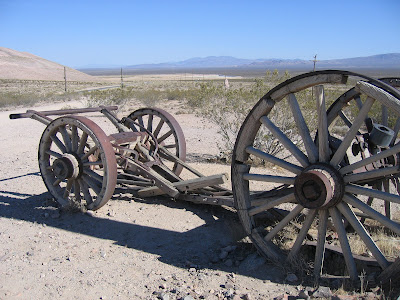
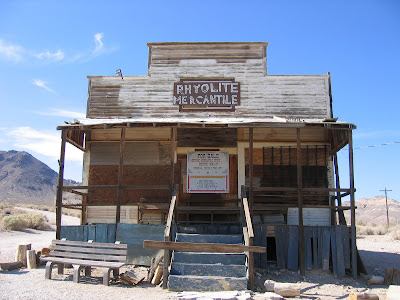
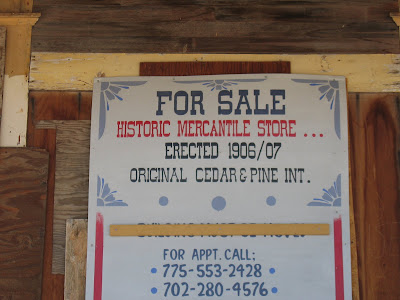

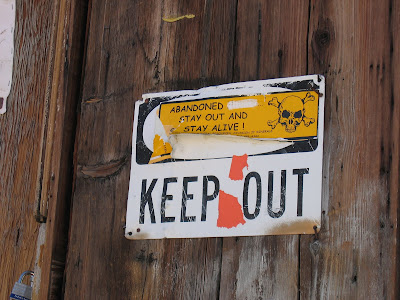


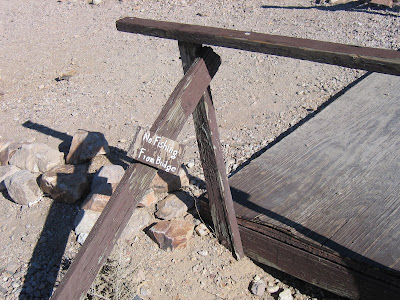

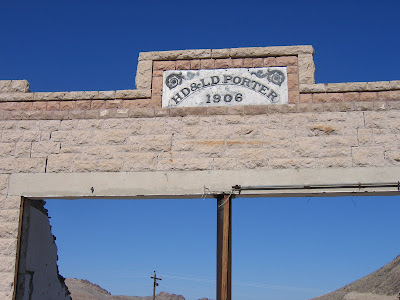
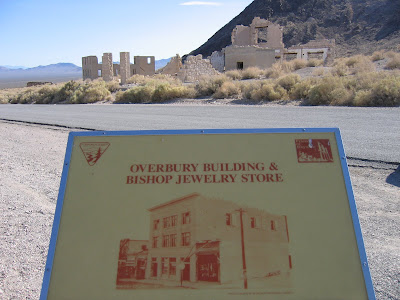
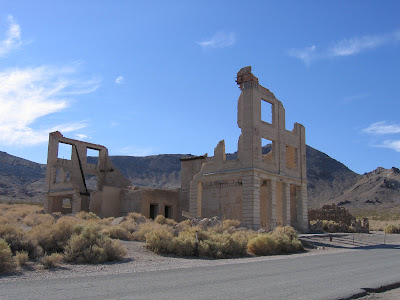




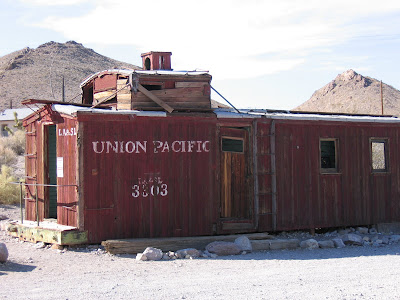
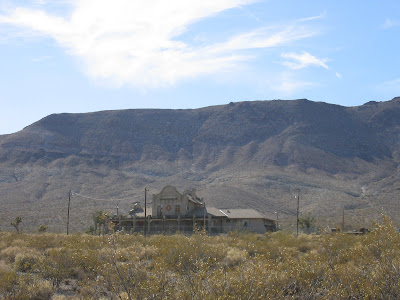
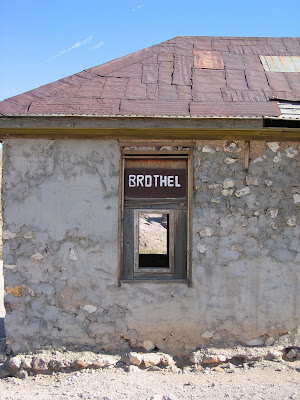

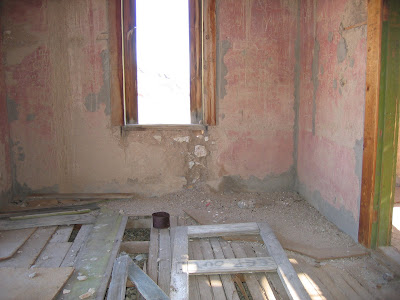

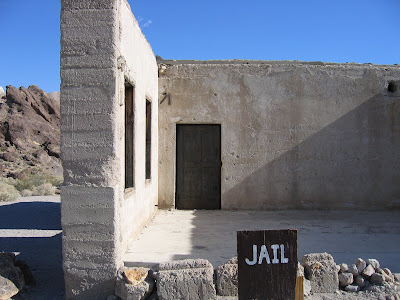
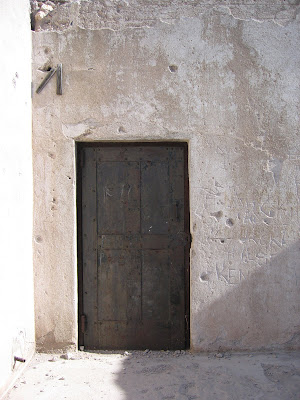

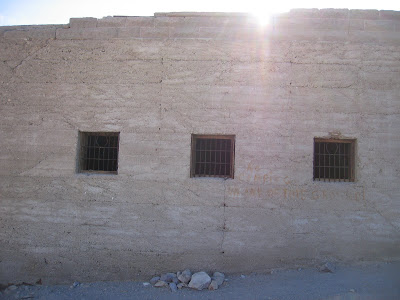
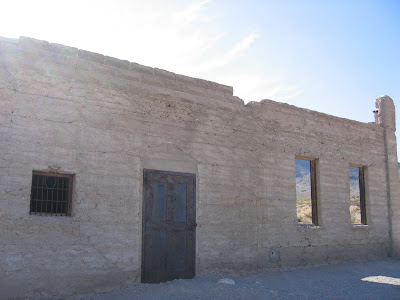
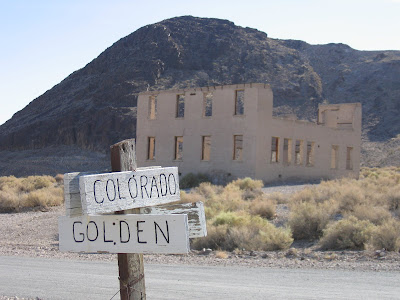

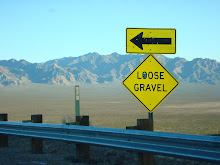
No comments:
Post a Comment